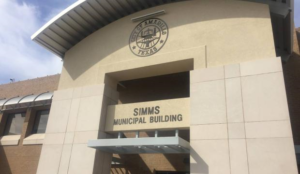It was a Saturday morning 16 years ago. The phone rang. A colleague of mine at the Amarillo Globe-News was on the other end of the call. “Did you hear about the shuttle Columbia?” he asked. No. “It broke up on re-entry,” he said.
I blurted out a four-letter word, then rushed to the office to prepare an editorial for the next day’s newspaper.
The demise of the Columbia on Feb. 1, 2003 had special resonance with the readers of our newspaper. Its commander was a son of the Texas Panhandle, U.S. Air Force Col. Rick Husband.
You see, Col. Husband never really “left” Amarillo, the city of his birth and where he came of age. Yes, he would go on to graduate from Texas Tech University, enter the Air Force, earn his wings, fly high-performance jet aircraft and eventually become an astronaut.
He returned home often. My wife and I had the pleasure of meeting him one Sunday at the church we attended. He came to deliver a message from the pulpit. His wife, Evelyn, grew up at First Presbyterian Church and Kathy and I became acquainted with her late parents, Jean and Dan Neely.
Columbia broke apart on re-entry after completing a 16-day mission in Earth orbit. It had been a resounding success. However, unbeknownst to the crew, a piece of debris hit the leading edge of the wing on liftoff, puncturing a hole in it. Re-entry into the atmosphere created intense heat and, thus, the ship caught fire and disintegrated.
I want to mention one more example of Rick Husband’s eternal connection to Amarillo and the Texas Panhandle. You see, he was one of six Americans on the seven-member crew; the seventh was an Israeli officer. Of the American heroes aboard the Columbia, all but one of them were interred at Arlington National Cemetery in Washington, D.C.
It took recovery crews some time to find the remains of the crew in East Texas. When they found Rick Husband’s remains, they brought them to Amarillo and buried him at Llano Cemetery.
Rick Husband came home . . . where he belonged.



